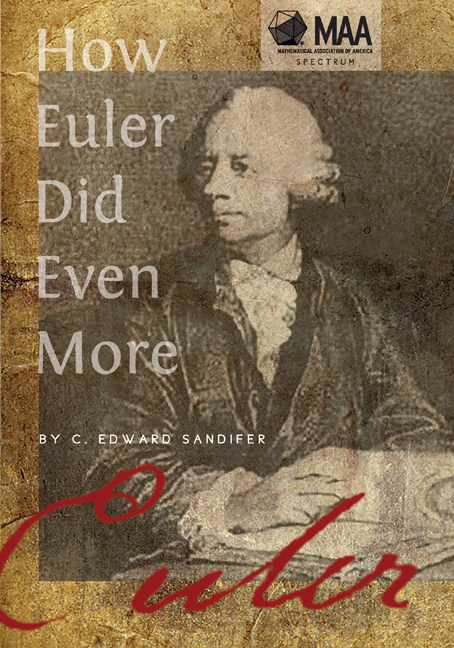6 - Factoring F5 (March 2007)
from Part II - Number Theory
Summary
Two names stand large in the history of number theory, Pierre de Fermat (1601–1665) and Leonhard Euler (1707–1783). Fermat, sometimes called The Great Amateur, was a parttime mathematician, a contemporary and rival of Descartes. His “real job” was as a judge in Toulouse, France. At the time, judges were expected to avoid the company of people on whom they might be required to pass judgment, so Fermat lived in comparative isolation, away from the people of Toulouse, with plenty of time to work on his mathematics. He kept in touch with current developments through his correspondence with Marin Mersenne.
Fermat worked on many of the same problems as René Descartes (1596–1650). They independently discovered analytic geometry, but since Fermat seldom published anything, Cartesian coordinates bear the name of Descartes, not Fermat. Both tried to “restore” the lost books of Apollonius, and when Fermat discovered a pair of amicable numbers, Descartes retaliated by finding another pair. Both discovered techniques for finding the line tangent to a given curve at a given point, and Fermat showed how to find the area under a curve given by the equation y = xn as long as n was not equal to −1. All of this was very important in setting the stage for the discovery of calculus, later in the 1600's. Fermat and Descartes did not like each other very much. In fact, some people describe their relationship as a “feud,” but it seems that Descartes resented Fermat more than Fermat disliked Descartes. They probably never met.
Fermat followed many of the mathematical traditions of the 17th century. Rather than provide proofs, he more often simply announced results and left the proofs of his claims as challenges to his readers. Others he wrote in the margins of his books. Those margin notes became known to the mathematical world when his son, Samuel, published his notes and papers in 1666, just after Pierre's death.
- Type
- Chapter
- Information
- How Euler Did Even More , pp. 41 - 44Publisher: Mathematical Association of AmericaPrint publication year: 2014



